#history of assyria
Text
youtube
The Sumerian Word for "Love" ❤️
How to say "I Love You 🥰" in Akkadian Language
Sumerian and Akkadian are two ancient languages spoken thousands of years ago by the people of ancient Mesopotamia. Sumerian was spoken in southern Mesopotamia (now Iraq) and Akkadian was spoken in northern Mesopotamia (Assyrian civilization) and southern Mesopotamia (Babylonian civilization).
Read More:
History of wine in Mesopotamia
Follow my YouTube channel. Silent tablets documentary, short videos from ancient history.
Follow my Twitter.
#ancient mesopotamia#archaeology#mesopotamia#ancient history#akkadian#ancient iraq#akkadian language#ancient assyria#assyrian#history of assyria#history of babylon#sumerian language#civilizations of babylon#civilizations of assyria#Youtube#romantic#romantic words
3 notes
·
View notes
Text


~ Plaque of conjuration against the Lamashtu, called "plaque of the underworld" or Hell Plate.
Period: Neo-Assyrian (1st half of the millennium)
Place of origin: Assyria
Medium: Bronze
#ancient#ancient art#history#museum#archeology#ancient sculpture#ancient history#archaeology#assyria#assyrian#plaque#Lamashtu#conjuring#underworld#hell plate#Neo-Assyrian#bronze
2K notes
·
View notes
Text
Assyria - World History, Greek Pedagogical Encyclopedia, Ekdotike Athenon
Ασσυρία - Παγκόσμια Ιστορία Εκδοτικ��ς Αθηνών 1990
Ассирия - всемирная история, Греческая педагогическая энциклопедия, Экдотика Афинон


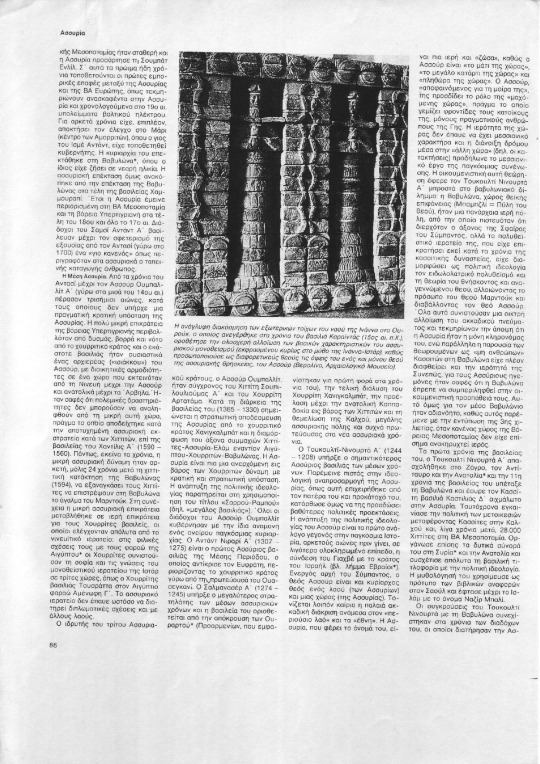




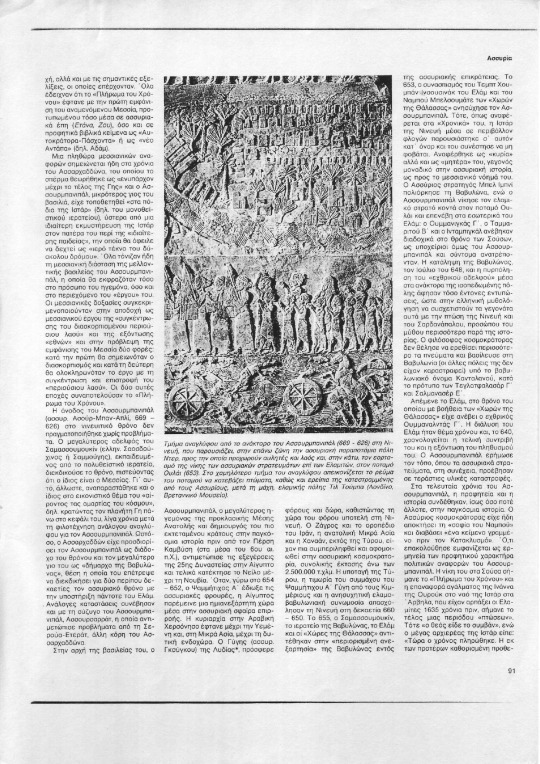
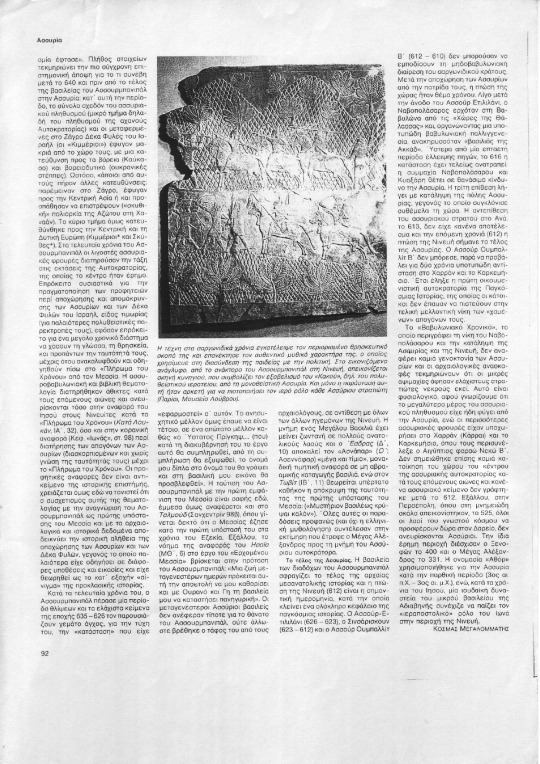
--------------------------
Κατεβάστε το άρθρο: / Download the article: / Скачать статью:
issuu
#Assyria#History of Assyria#Sargonid#Tiglath-pileser I#Shamsi Adad I#Tiglath-pileser III#Shalmanaser III#Assurnazirpal II#Semiramis#Tukulti Ninurta I#Mesopotamia#Babylonia#Elam#Hurrians#Hittites#Neo-Hittites#Assurbanipal
1 note
·
View note
Text

Ivory furniture plaque, Assyria, 9th-8th century BC
from The Metropolitan Museum of Art
363 notes
·
View notes
Text

Cesare Saccaggi (1868-1934)
"Great Semiramis, Queen of Assyria" (c. 1905)
Oil on canvas, gold and precious stones
The myth of Semiramis has its roots in late antiquity. Historiography, religion, art and literature have contributed to passing on different and contradictory legends linked to her figure over the centuries: some recognize her as the enlightened Assyrian ruler Shammuramat, wife of King Shamshi-Adad V and regent of his son Addu-Nirari III--to whom we owe the realization of the hanging gardens of Babylon.For others, Semiramis is the daughter of a nymph, abandoned in the desert and then fed by doves - the 'daughter of the air', according to Calderón de la Barca and Carlo Gozzi. Or she is the daughter of the goddess Derceto and the Syrian Caistro, married first to Onne, then to King Nino, with whom she had a son who, according to tradition, when he became an adult, chased her from the throne and killed her. During her reign, Semiramis conquered Mesopotamia, Egypt and Ethiopia. Herodotus and Diodorus Siculus speak of her as a great and good sovereign.
#paintings#art#artwork#painting#female portrait#cesare saccaggi#oil on canvas#fine art#italian artist#gold#precious stones#portrait of a woman#big cat#animals#costume#costumes#history#mythology#assyrian#ancient assyria#aesthetic#aesthetics#white dress#dressess#early 1900s#early 20th century
411 notes
·
View notes
Text

The Sennacherib prism, commissioned by the Assyrian king in the 600s BCE. Its ten sides contain records of his conquests and achievements in cuneiform. The record culminates with Sennarcherib's 15-month siege and destruction of Babylon.
{WHF} {Ko-Fi} {Medium}
434 notes
·
View notes
Text

THE DAWN OF CIVILIZATION by G. Maspero and edited by A.H. Sayce. Numerous spot illustrations.
The history of Egypt, Chaldea, Syria, Babylonia, and Assyria.

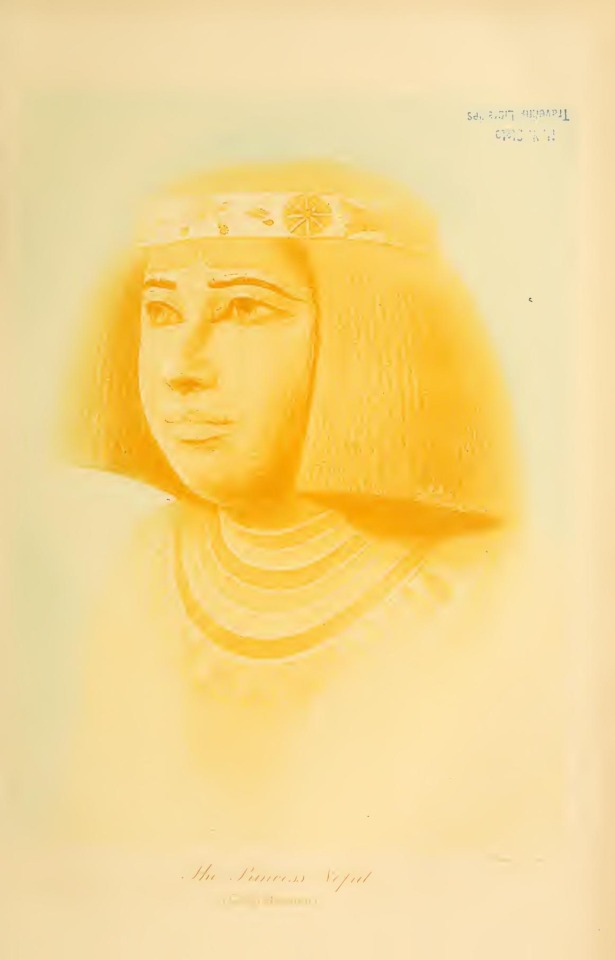
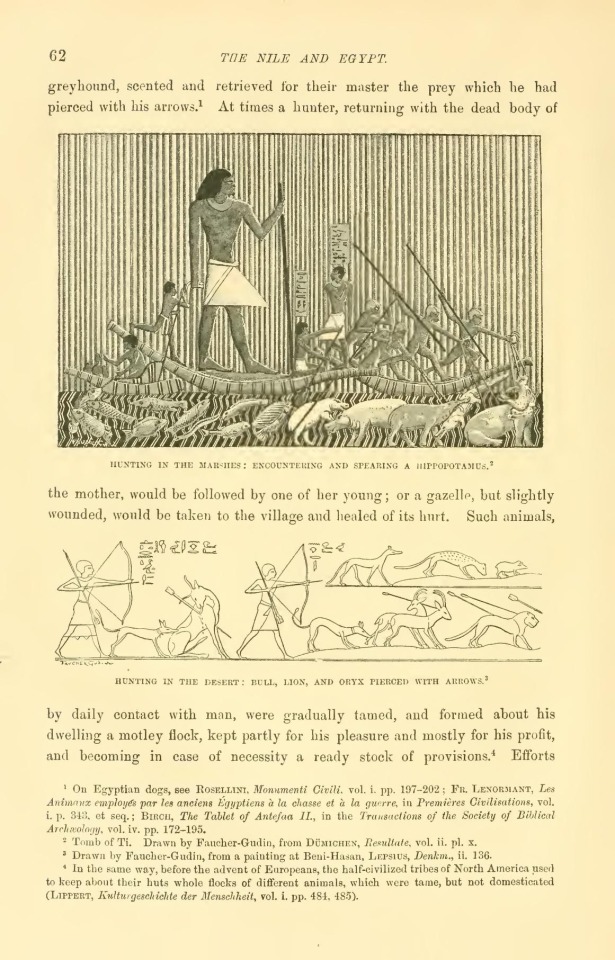

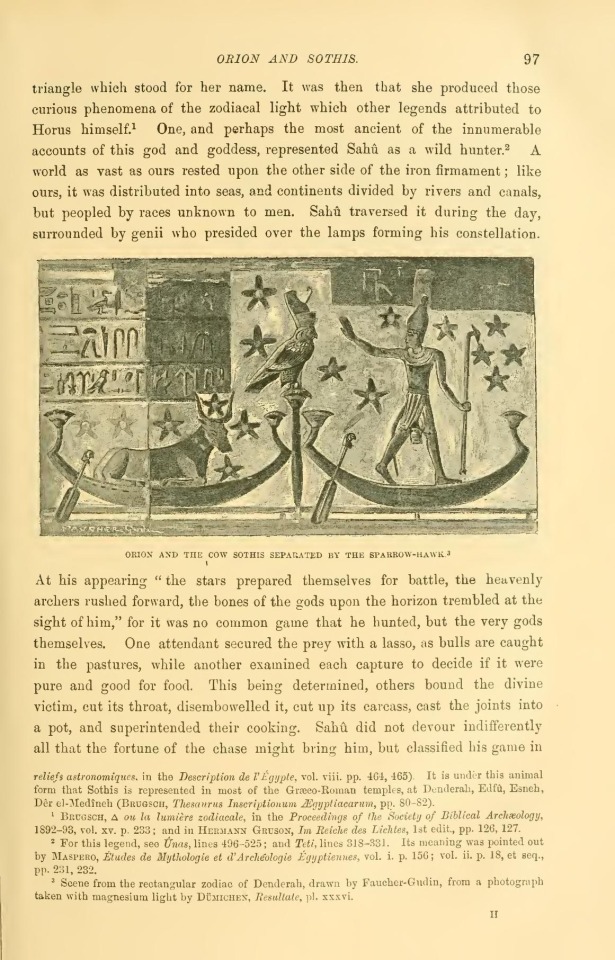
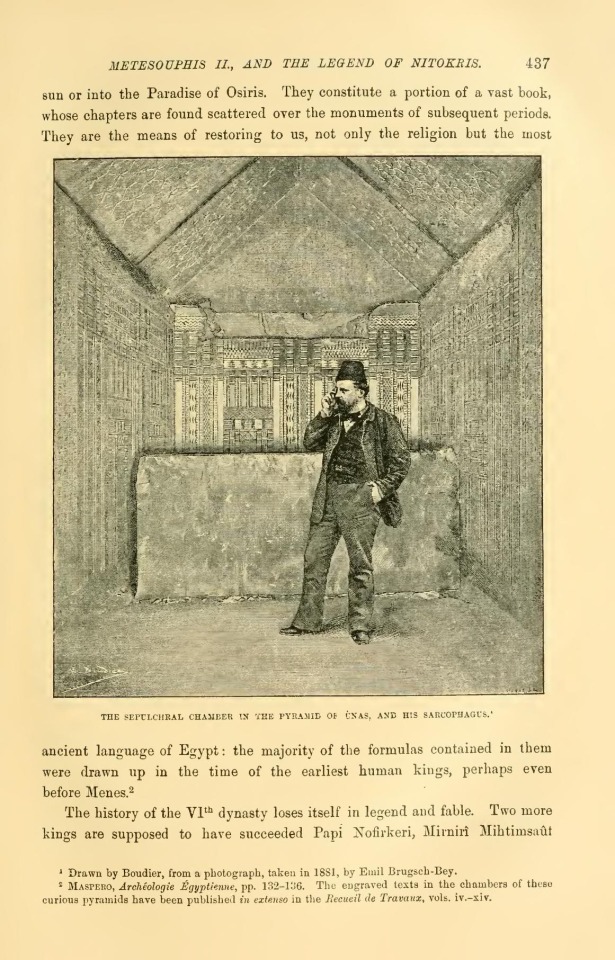
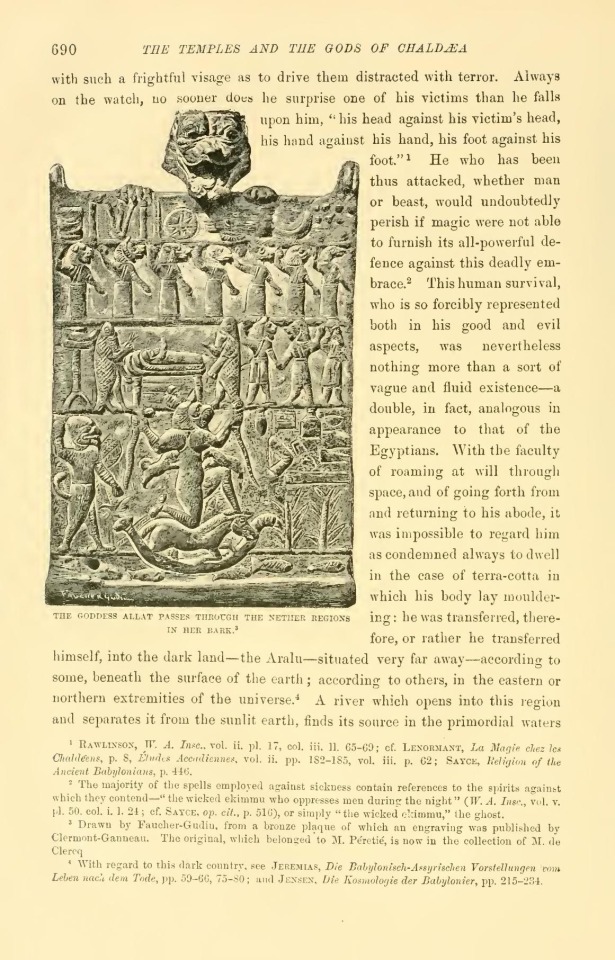

source
#beautiful books#book blog#books books books#book cover#books#vintage books#illustrated book#book design#history#ancient egypt#ancient civilizations#ancient cultures#chaldea#syria#babylonian#ancient assyria
69 notes
·
View notes
Photo

Assyria: The Rise and Fall of the World’s First Empire
Eckart Frahm's Assyria: The Rise and Fall of the World's First Empire is a remarkable scholarly work and a masterful exploration of one of the most intriguing and influential civilizations of the ancient world. Through meticulous research and engaging prose, Frahm invites readers on an enthralling journey into the heart of the Assyrian empire, shedding light on its history, culture, and lasting impact on human civilization. In this meticulously crafted and comprehensive volume, Frahm expertly navigates the complexities of Assyrian historical accounts, archaeological findings, and cultural insights to supply a comprehensive understanding of Assyrian society. He traces the empire from its early beginnings to its rise and eventual decline. Frahm's command over historical sources, both textual and archaeological, is clear as he weaves together a rich tapestry of events, personalities, and cultural dynamics that shaped Assyria's trajectory. The book chronicles the rise of the empire, its expansionist policies, and the exceptional military prowess that allowed it to become a dominant force in the ancient world.
Continue reading...
257 notes
·
View notes
Text
Also leaving this here since today is the Remembrance Day for victims of the Anfal genocide.
Where Saddam Hussein (with the help of the MEK) and his cronies slaughtered hundreds of thousands of Kurds and Assyrians (and other minorities) in Iraq near the end of the Iran-Iraq war.
I posted about it earlier this year not too long ago.
Feel free to reblog.
#dougie rambles#news#political crap#middle east#mesopotamia#iraq#assyria#bethnahrin#kurdistan#kurds#assyrians#Assyrian people#genocide#anfal genocide#forgotten history#remembrance#commemoration#anniversary#Iran-Iraq war#saddam hussein#war crimes#terrorism#reblog this#reblog the shit out of this#feel free to reblog#history
54 notes
·
View notes
Text

Tinkering around in blender and gimp rn
#my wips#sims 4#s4mm#sims 4 history#mesopotamia#mesopotamian#assyrian#assyria#sumer#sumerian#queen puabi#bablyonian#bablyon#wip hair#wip outfits
163 notes
·
View notes
Text
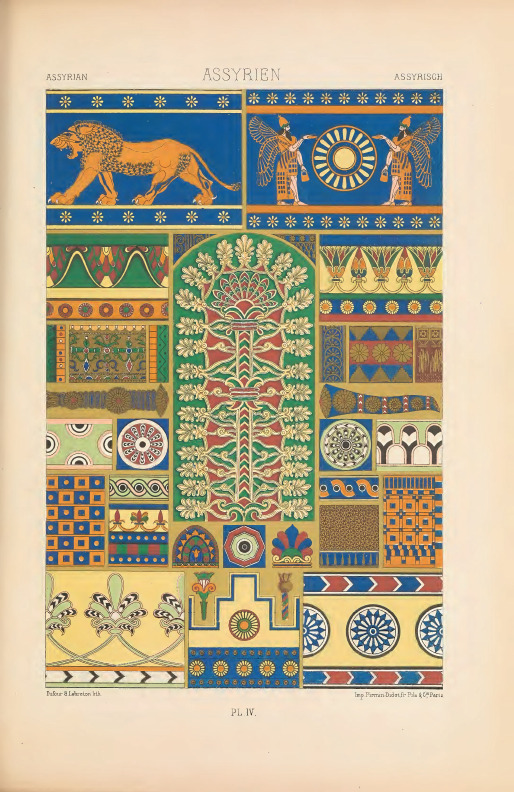

Albert Racinet's "Polychrome Ornament," 1869
PLATE IV
ASSYRIAN ART
EXAMPLES OF POLYCHROMATIC DECORATION
TWO distinct periods may be noted in Assyrian art: the first, that of the foundation of Babylon by the Nabateans, on an alluvial soil destitute of stone quarries-a period characterized by the exclusive use of brick, an.cl in which architecture was confined within very narrow limits; and a second period, that of the foundation of Nineveh by the Scythians, the conquerors of primitj.ve Babylon, in a region where basalt ancl numerous stone quarries rendered possible a monumental architecture quite unknown to the Babylonians.
It is to this Ninevite period, which might also be called the Scytho-Assyrian, that the majority of the remains collected in the museums of London and Paris belong; as also do the various specimens given in our plate.
NINEVEH - PALACE OF KHORSABAD.
No. 1.-Painted sculptures, after Layard.
Nos. 2, 3, 4.-Painted sculptures, after Victor Place. No. 5.-Bricks inlaid in colours, after Layard.
Nos. 6 to 10.-Enamelled bricks, after Victor Place. Nos. 11 to 18.-Various specimens, after La yard. Nos. 19, 20.-Paintings, after Victor Place.
Nos. 21 to 23.-Restorations, after Botta
#Albert Racinet#art#ancient history#ancient art#1800s art#1800s#19th century#ancient assyria#assyrian#antiquity#illustration#design#aesthetic#cultural art
54 notes
·
View notes
Text
youtube
The name of the walls of the city of Ashur?
And what were the names of the parts of the city?
This video shows the architecture of the city of Assyria and the names of the walls that were built to protect the city, using archaeological evidence and the exploration of cuneiform tablets.
Follow my YouTube channel. Silent tablets documentary, short videos from ancient history.
Follow my Twitter.
#archaeology#akkadian#ancient mesopotamia#mesopotamia#ancient history#akkadian language#ancient assyria#assyrian#city of assyria#sumerian city#city of ashur#history#history of assyria#history of assyrian empire#the name of the walls of the city of ashur#ancient architecture#ancient iraq#architecture#archaeological#archeology#archeology of iraq#archeology of assyria#history of ancient assyria#assyriology#Youtube
1 note
·
View note
Text


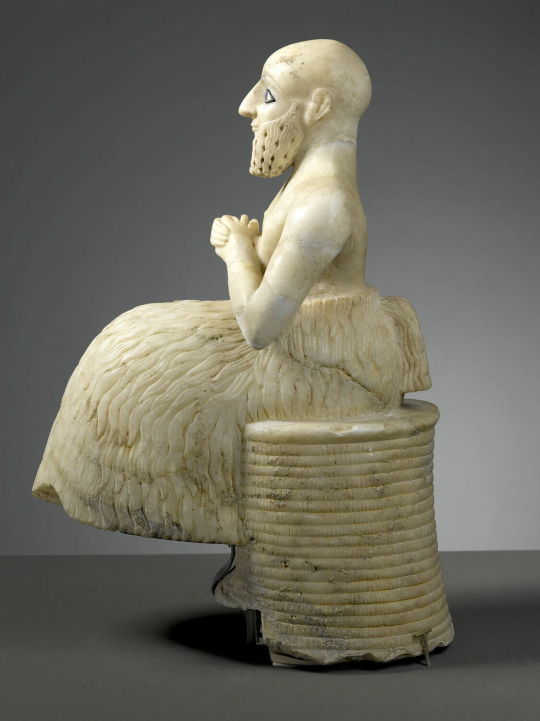
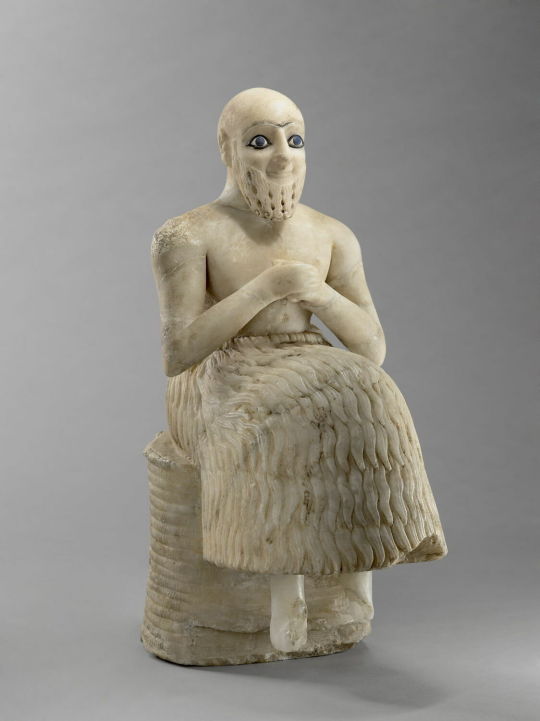

~ Statue of the intendant Ebih-Il.
Place of discovery: Mari temple of Ishtar courtyard 20
Date: 2500-2340 B.C.
Period: Archaic dynasty IIIB
Medium: Alabaster, shell, lapis lazuli, bitumen
▪︎ Inscription/Dedication (in Akkadian): "Statue of Ebih-Il, the Steward, to Ishtar he dedicated it".
#ancient#ancient art#history#museum#archeology#ancient sculpture#ancient history#archaeology#assyria#akkadian#statue of intendant#mari temple of Ishtar#Ebih-Il#praying#dedication#2500 b.c.#2340 b.c.
1K notes
·
View notes
Text
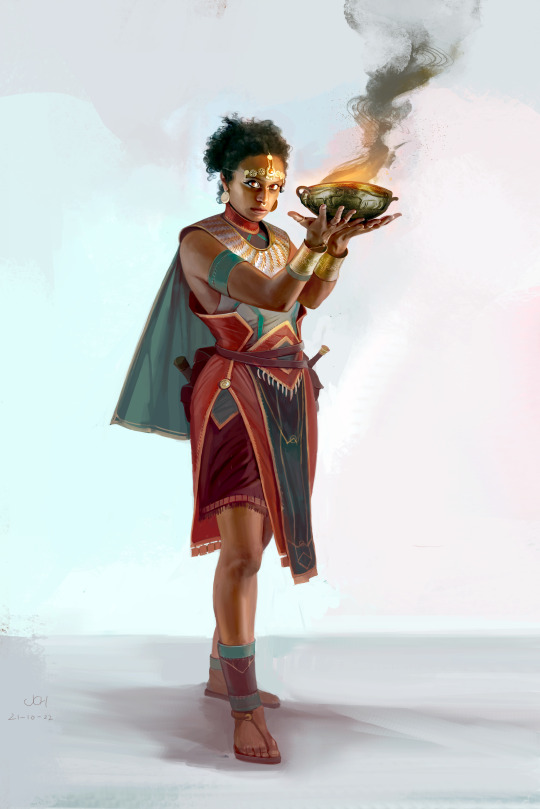
Painting from a year ago, an exploration for my worldbuilding, set in the Bronze Age Middle East, a worshipper of the fire deity Chemosh.
Hope you like it!
Best,
JCH
www.joelchaimholtzman.com
#dungeons and dragons#board games#concept art#tabletop games#fantasy art#digital painting#magic the gathering#character design#ancient history#armor#middle east#bronze age#occult#sorceres#wizard#african mythology#middle eastern mythology#assyria#babylon#ancient egypt
89 notes
·
View notes
Text
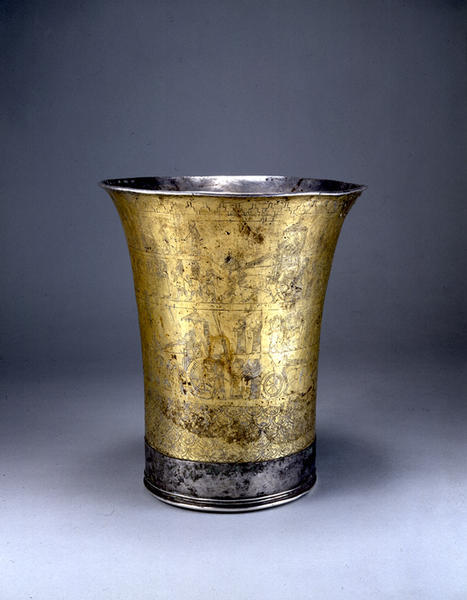

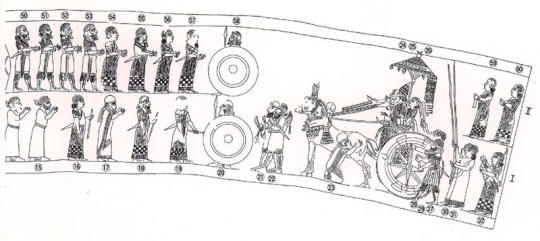
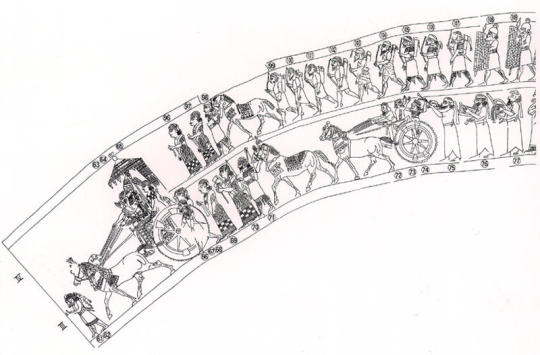

Gilded silver cup depicting the Assyrian subjugation of the Elamites, Neo-Assyrian Empire, 8th-7th century BC.
from The Miho Museum, Kyoto
276 notes
·
View notes
Text
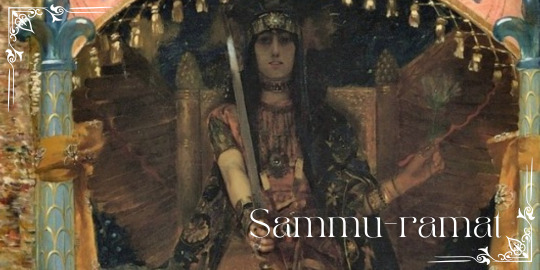
"Sammu-ramat was the wife of King Shamshi-Adad V (823– 811 BCE) and mother of King Adad-narari III (810– 783). Some scholars assume that she was co-regent with her son, while others doubt that she served this function. The main evidence for the assumption that she functioned as co-regent (not a clearly defined office, but a rather an ad hoc solution in a difficult situation), is a stone stele that is extraordinary in several regards:
Boundary stone of Adad-narari, king of Assyria, son of Shamshi-Adad (V), king of Assyria (and of) Semiramis, the palace-woman of Shamshi-Adad, king of Assyria, mother of Adad-narari, strong king, king of Assyria, daughter-in-law of Shamaneser (III), king of the four quarters. When Ushiplulume king of the Kummuhites, caused Adad-narari, king of Assyria (and) Semiramis, the palace woman to cross the Euphrates. I fought a pitched battle with them – with Atarshumki, son of Adramu, of the city of Arpad together with eight kings who were with him at the city Paqarahubunu. I took away from them their camp. To save their lives they dispersed. In this (same year) they erected this boundary stone […]
The first extraordinary fact is that the king mentions his mother in his genealogy, something that is completely unusual. Additionally, he states that he was accompanied by his mother while he was on a campaign, which seems a bit strange for a heroic king. These two points indicate that Sammu-ramat actually held a truly prominent role, that perhaps she herself led the military operation instead of her son Adad- narari, who might simply have been too young to rule himself.
However, as we do not have much further evidence, her co- regency will remain a matter of discussion, but the simple existence of this inscription indicates that something extraordinary was going on here.
As mentioned above, we have no evidence for later narratives that refer to a powerful warrior queen Sammu-ramat in Mesopotamia that might have inspired the creation of the Greek image of the Mesopotamian warrior queen Semiramis. Since most of our sources derive from official or even royal archives, it comes as no surprise that folk stories are not very well attested. They mainly belonged to the oral sphere and if they were written down, scribes might have used the easier Aramaic for such stories. Unfortunately, Aramaic was mostly written on papyri and parchment and these organic materials quickly deteriorated under Mesopotamian climatic conditions. Therefore, it seems very unlikely that we will ever know what inspired the Greeks when they wrote about the famous queen Semiramis, who has often been considered identical with Sammu-ramat. Actual evidence for links between the two women are as yet missing."
Fink Sebastian, "Invisible Mesopotamian royal women?", in: The Routledge companion to women and monarchy in the ancient mediterranean world
#sammu-ramat#history#women in history#women's history#queens#mesopotamia#assyria#ancient world#ancient history#warrior queens#9th century BCE#powerful women
33 notes
·
View notes